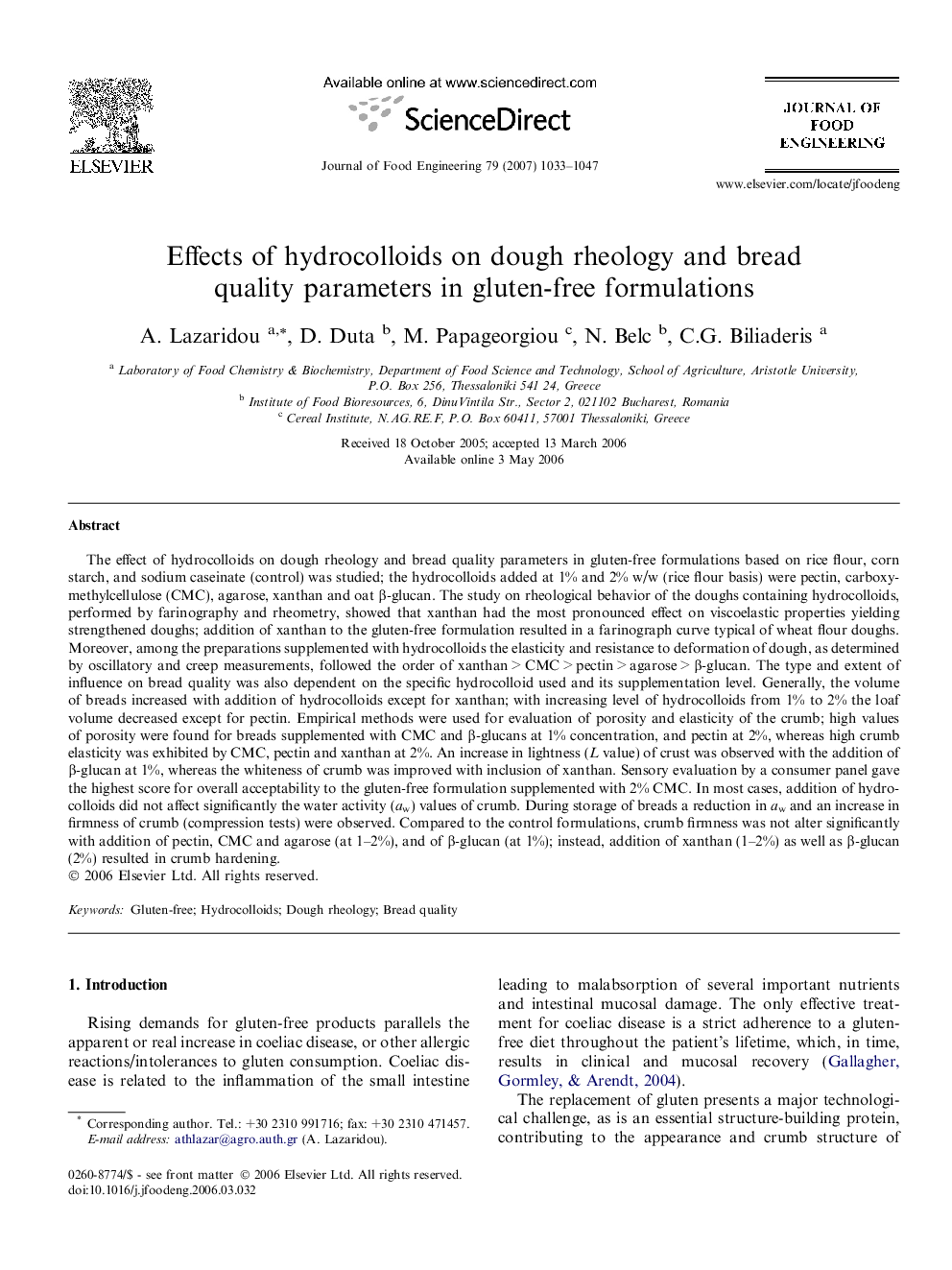| کد مقاله | کد نشریه | سال انتشار | مقاله انگلیسی | نسخه تمام متن |
|---|---|---|---|---|
| 225673 | 464506 | 2007 | 15 صفحه PDF | دانلود رایگان |

The effect of hydrocolloids on dough rheology and bread quality parameters in gluten-free formulations based on rice flour, corn starch, and sodium caseinate (control) was studied; the hydrocolloids added at 1% and 2% w/w (rice flour basis) were pectin, carboxymethylcellulose (CMC), agarose, xanthan and oat β-glucan. The study on rheological behavior of the doughs containing hydrocolloids, performed by farinography and rheometry, showed that xanthan had the most pronounced effect on viscoelastic properties yielding strengthened doughs; addition of xanthan to the gluten-free formulation resulted in a farinograph curve typical of wheat flour doughs. Moreover, among the preparations supplemented with hydrocolloids the elasticity and resistance to deformation of dough, as determined by oscillatory and creep measurements, followed the order of xanthan > CMC > pectin > agarose > β-glucan. The type and extent of influence on bread quality was also dependent on the specific hydrocolloid used and its supplementation level. Generally, the volume of breads increased with addition of hydrocolloids except for xanthan; with increasing level of hydrocolloids from 1% to 2% the loaf volume decreased except for pectin. Empirical methods were used for evaluation of porosity and elasticity of the crumb; high values of porosity were found for breads supplemented with CMC and β-glucans at 1% concentration, and pectin at 2%, whereas high crumb elasticity was exhibited by CMC, pectin and xanthan at 2%. An increase in lightness (L value) of crust was observed with the addition of β-glucan at 1%, whereas the whiteness of crumb was improved with inclusion of xanthan. Sensory evaluation by a consumer panel gave the highest score for overall acceptability to the gluten-free formulation supplemented with 2% CMC. In most cases, addition of hydrocolloids did not affect significantly the water activity (aw) values of crumb. During storage of breads a reduction in aw and an increase in firmness of crumb (compression tests) were observed. Compared to the control formulations, crumb firmness was not alter significantly with addition of pectin, CMC and agarose (at 1–2%), and of β-glucan (at 1%); instead, addition of xanthan (1–2%) as well as β-glucan (2%) resulted in crumb hardening.
Journal: Journal of Food Engineering - Volume 79, Issue 3, April 2007, Pages 1033–1047